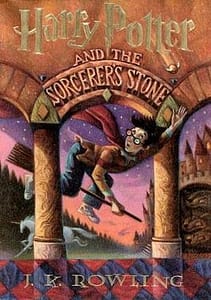
One of my favorite aspects of the Harry Potter series is its symmetry. It is wonderful to see connections throughout the books and movies. In particular, I like the little bits and bobs linking the stories all together.
When it comes to Harry himself, his relationship with Hagrid, connects the story from book 1 to the last story. In particular, Hagrid was key in Harry’s development. He is the one who brings him to Hogwarts in the first book, and the last book, too. Hagrid takes him on a motorcycle ride as a baby and as a grown wizard man.
But the symmetry extends beyond Harry and Hagrid–it’s between other relationships as well. The story begins with an orphaned Harry, and ends with an orphaned Teddy Lupin. Moreover, mothers’ love is used as a device connecting Harry, Draco, Narcissa, and Lily. Lily sacrifices her life for Harry, Narcissa does the same for Draco’s sake. Same goes with Molly and Ginny. She kills Bellatrix for her daughter’s safety.
Another lovely connection is between Harry and the Deathly Hallows. Voldemort is obsessed with power, so he takes the Elder Wand. Snape, connected to the ghosts of his love, is connected with the Resurrection Stone, and finally, Harry welcomes death like an old friend. He is okay with letting go and this is why he’s the true master of the Deathly Hallows. Also, in the series, Harry comes in contact with the other Hallows and lets them go. He is sincere when he first meets the Resurrection Stone; only wanting to find it to hide it from Voldemort. The same idea echoes in the way Harry discards the Elder Wand. Uninterested in power or living forever, he is our hero in the stories.
I am in awe of the relationship between Ron and Hermione as well. In the first book, she teaches him how to swish and flick, the wizard way. In the last book, he teaches her how to swish and flick with a stone, the muggle way. Not bad, Ron and Hermione.
One more great connection: the Black family has Sirius who betrays the family to join the light side. Meanwhile, the Weasley family has Percy who wants to be part of the treacherous ministry. Again, Kreacher and Dobby also switch roles. Dobby, coming from a “dark” family, helps Harry to avoid his death. Kreacher, also working for a seemingly evil wizarding family, gives him information and helps him in the final books.
Again, Harry and Ginny’s relationship completes the circle. Harry, with his messy hair, is often told he looks just like his father. He plays Quidditch. He is not very good at school. Yet, Ginny, with her read hair, is similar to Lily. Both are presented as unique. For the Weasleys, Ginny is the only girl out of their children. For Lily, she is the only witch in the family.
Last but not least, there is the element of betrayal. The Order of the Phoenix is betrayed by Mundungus. By the same token, the Marauders are betrayed by Peter Pettigrew.
Symmetry ties the story together, and brings a sense of conclusion and finality to the stories. It makes events and characters more than their own selves, but as elements of a grander story. Harry Potter mirrors the same relationships and connections from the first book to the last.
Your Turn:
What is your favorite story from your childhood? Why do you like it? Share in the comments!
For More:
–“Harry Potter is Symmetrical”
You must be logged in to post a comment.